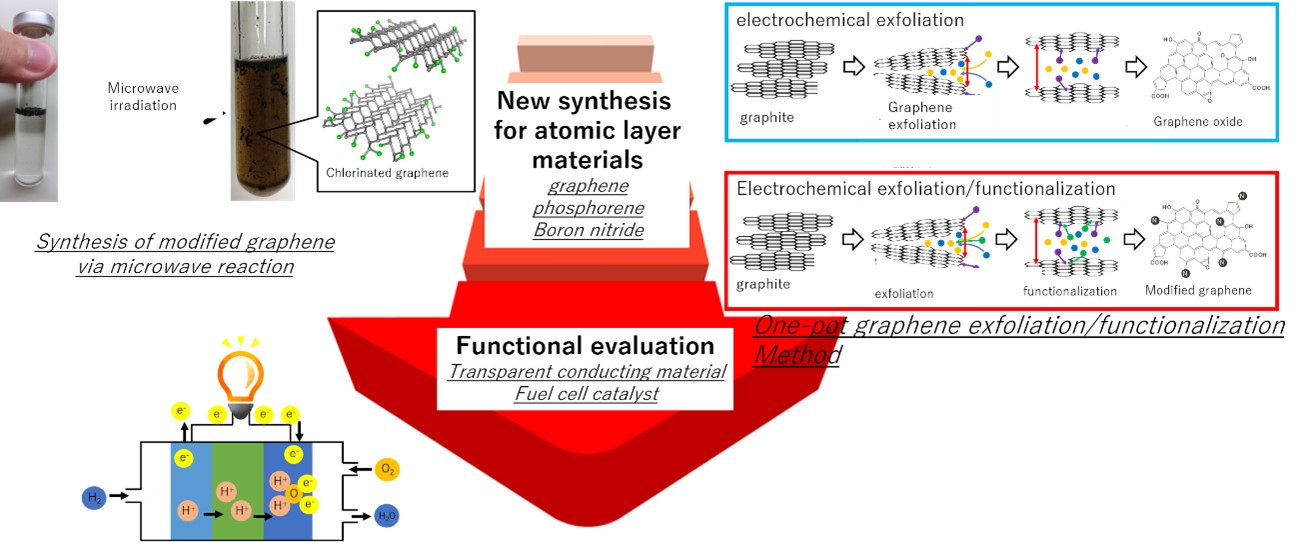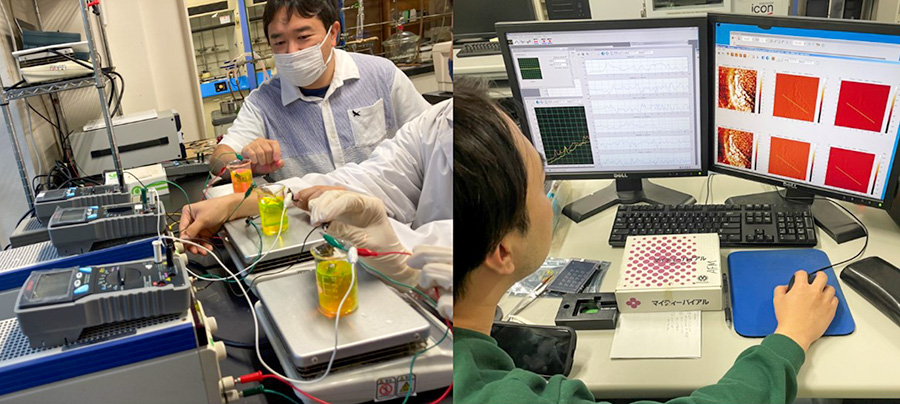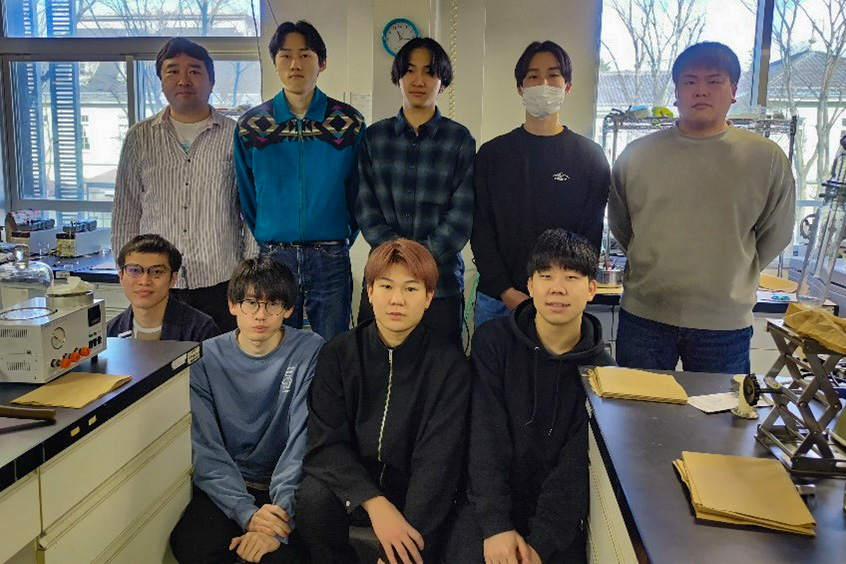Research


Home > Research > OKIMOTO laboratory
Research fields/Keywords:graphene, phosphorene, electrochemical exfoliation, bipolar electrochemistry, microwave synthesis, Synthesis of modified graphene materials via electrochemical exfoliation/functionalization
 Assistant Professor Haruya OKIMOTO
Assistant Professor Haruya OKIMOTO
We are developing new synthesis and separation methods for nanocarbon materials, such as graphene, and evaluating their functionality. Graphite, which is inexpensively available, is a layered compound of nanocarbon material called graphene. The main theme of our laboratory is to inexpensively produce graphene with chemically modified surfaces by expanding or chemically modifying the graphite layers under mild conditions.

A planar material with a thickness of several atoms is called an atomic layer material. There are various combinations of atomic layer materials such as carbon, phosphorus, nitrogen, and boron, which are functional materials that have both inorganic and organic functions, such as transparency, conductivity, and flexibility, and are useful for transparent electrodes and batteries. It is attracting attention as a catalyst material. On the other hand, one of the hurdles to commercialization is that it is difficult to mass-produce at low cost. we are developing new synthetic methods to make these atomic layer materials more cheaply and easily using electrochemical reactions as keywords. For example, we have made it possible to exfoliate graphene, a nanocarbon material, using only pencil lead and salt water. Furthermore, by combining this exfoliation reaction with an electrochemical modification reaction, we have achieved the production of chemically modified graphene in one step, and are also conducting research on its use as a fuel cell catalyst.
★Recent research topic

